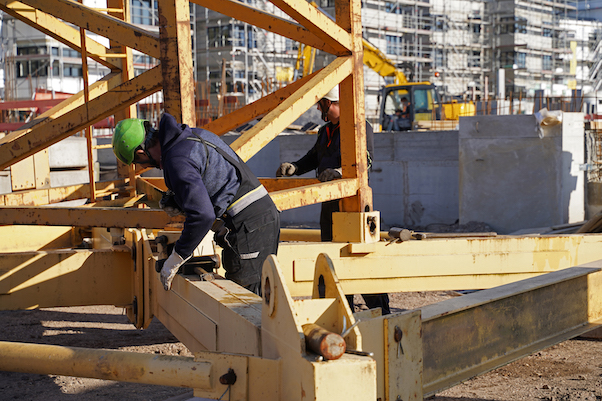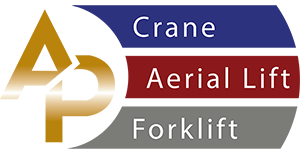Services
Aerial Lift TrainingForklift Operator Certification
Instructor Courses
Mobile Crane Operator Certification
Online Training
Crane Operator Training
Overhead Crane Training
Rigging and SignalPerson Training
All Purpose Crane Training offers crane operator training on-site or off-site. Providing National accredited crane operator certification meeting OSHA ANSI standards for crane operators to become certified.
1926.1401
1926.1402
1926.1403
1926.1404
1926.1405
1926.1406
1926.1407
1926.1408
1926.1409
1926.1410
1926.1411
1926.1412
1926.1413
1926.1414
1926.1415
1926.1416
1926.1417
1926.1418
1926.1419
1926.1420
1926.1421
1926.1422
1926.1423
1926.1424
1926.1425
1926.1426
1926.1427
1926.1428
1926.1429
1926.1430
1926.1431
1926.1432
1926.1433
1926.1434
1926.1435
1926.1436
1926.1437
1926.1438
1926.1439
1926.1440
1926.1441
1926.1442

- (a) Supervision - competent qualified person.
- (1) Assembly/disassembly must be directed by a person who meets the criteria for both a competent person and a qualified person, or by a competent person who is assisted by one or more qualified persons ("A/D director").
- (2) Where the assembly/disassembly is being performed by only one person, that person must meet the criteria for both a competent person and a qualified person. For purposes of this standard, that person is considered the A/D director.
- (b) Knowledge of procedures. The A/D director must understand the applicable assembly/disassembly procedures.
- (c)Review of procedures.The A/D director must review the applicable assembly/disassembly procedures immediately prior to the commencement of assembly/disassembly unless the A/D director under- stands the procedures and has applied them to the same type and configuration of equipment (including accessories, if any).
- (d) Crew instructions.
- (1) Before commencing assembly/disassembly operations, the A/D director must ensure that the crew members understand all of the following
- (i) Their tasks.
- (ii) The hazards associated with their tasks.
- (iii) The hazardous positions/locations that they need to avoid.
- (2) During assembly/disassembly operations, before a crew member takes on a different task, or when adding new personnel during the operations, the requirements in paragraphs (d)(1)(i) through (d)(1)(iii) of this section must be met.
- (e) Protecting assembly/disassembly crew members out of operator view.
- (1) Before a crew member goes to a location that is out of view of the operator and is either in, on, or under the equipment, or near the equipment (or load) where the crew member could be injured by movement of the equipment (or load), the crew member must inform the operator that he/she is going to that location
- (2) Where the operator knows that a crew member went to a location covered by paragraph (e)( 1) of this section, the operator must not move any part of the equipment (or load) until the operator is informed in accordance with a prearranged system of communication that the crew member is in a safe position.
- (f) Working under the boom, jib or other components.
- (1)When pins (or similar devices) are being removed, employees must not be under the boom, jib, or other components, except where the requirements of paragraph (f)(2) of this section are met.
- (2) Exception. Where the employer demonstrates that site constraints require one or more employees to be under the boom, jib, or other components when pins (or similar devices) are being removed, the A/D director must implement procedures that minimize the risk of unintended dangerous movement and minimize the duration and extent of exposure under the boom. (See Non- mandatory Appendix B of this subpart for an example.)
- (g) Capacity limits. During all phases of assembly/disassembly, rated capacity limits for loads imposed on the equipment, equipment components (including rigging), lifting lugs and equipment accessories, must not be exceeded for the equipment being assembled/disassembled.
- (h) Addressing specific hazards. The A/D director supervising the assembly/disassembly operation must address the hazards associated with the operation, which include:
- (1) Site and ground bearing conditions. Site and ground conditions must be adequate for safe assembly/disassembly operations and to support the equipment during assembly/disassembly (see 1926.1402 for ground condition requirements).
- (2) Blocking material. The size, amount, condition and method of stacking the blocking must be sufficient to sustain the loads and maintain stability.
- (3) Proper location of blocking. When used to support lattice booms or components, blocking must be appropriately placed to:
- (i) Protect the structural integrity of the equipment, and
- (ii) Prevent dangerous movement and collapse.
- (4) Verifying assist crane loads. When using an assist crane, the loads that will be imposed on the assist crane at each phase of assembly/disassembly must be verified in accordance with 1926.1417(o)(3) before assembly/disassembly begins.
- (5) Boom and jib pick points. The point(s) of attachment of rigging to a boom (or boom sections or jib or jib sections) must be suitable for preventing structural damage and facilitating safe handling of these components.
- (6) Center of gravity
- (i) The center of gravity of the load must be identified if that is necessary for the method used for maintaining stability.
- (ii) Where there is insufficient information to accurately identify the center of gravity, measures designed to prevent unintended dangerous movement resulting from an inaccurate identification of the center of gravity must be used. (See Non-mandatory Appendix B of this subpart for an example.)
- (7) Stability upon pin removal. The boom sections, boom suspension systems (such as gantry A-frames and jib struts), and components must be rigged or supported to maintain stability upon the removal of the pins.
- (8) Snagging. Suspension ropes and pendants must not be allowed to catch on the boom or jib connection pins or cotter pins (including keepers and locking pins).
- (9) Struck by counterweights. The potential for unintended movement from inadequately supported counterweights and from hoisting counterweights.
- (10) Boom hoist brake failure. Each time reliance is to be placed on the boom hoist brake to prevent boom movement during assembly/disassembly, the brake must be tested prior to such reliance to determine if it is sufficient to prevent boom movement. If it is not sufficient, a boom hoist pawl, other locking device/back-up braking device, or another method of preventing dangerous movement of the boom (such as blocking or using an assist crane) from a boom hoist brake failure must be used.
- (11) Loss of backward stability. Backward stability before swinging the upperworks, travel, and when attaching or removing equipment components.
- (12) Wind speed and weather. The effect of wind speed and weather on the equipment.
- (i) [Reserved.]
- (j) Cantilevered boom sections. Manufacturer limitations on the maximum amount of boom supported only by cantilevering must not be exceeded. Where these are unavailable, a registered professional engineer familiar with the type of equipment involved must determine in writing this limitation, which must not be exceeded.
- (k) Weight of components. The weight of each of the components must be readily available.
- (l) [Reserved.]
- (m) Components and configuration.
- (1) The selection of components, and configuration of the equipment, that affect the capacity or safe operation of the equipment must be in accordance with:
- (i) Manufacturer instructions, prohibitions, limitations, and specifications. Where these are unavailable, a registered professional engineer familiar with the type of equipment involved must approve, in writing, the selection and configuration of components; or
- (ii) Approved modifications that meet the requirements of 1926.1434 (Equipment modifications).
- (2) Post-assembly inspection. Upon completion of assembly, the equipment must be inspected to ensure compliance with para graph (m)(1) of this section (see 1926.1412(c) for post-assembly inspection requirements).
- (n) [Reserved.]
- (o) Shipping pins. Reusable shipping pins, straps, links, and similar equipment must be removed. Once they are removed they must either be stowed or otherwise stored so that they do not present a falling object hazard.
- (p) Pile driving. Equipment used for pile driving must not have a jib attached during pile driving operations.
- (q) Outriggers and Stabilizers. When the load to be handled and the operating radius require the use of outriggers or stabilizers, or at any time when outriggers or stabilizers are used, all of the following requirements must be met (except as otherwise indicated):
- (1) The outriggers or stabilizers must be either fully extended or, if manufacturer procedures permit, deployed as specified in the load chart.
- (2) The outriggers must be set to remove the equipment weight from the wheels, except for locomotive cranes (see paragraph (q)(6) of this section for use of outriggers on locomotive cranes). This provision does not apply to stabilizers.
- (3) When outrigger floats are used, they must be attached to the outriggers. When stabilizer floats are used, they must be attached to the stabilizers.
- (4) Each outrigger or stabilizer must be visible to the operator or to a signal person during extension and setting.
- (5) Outrigger and stabilizer blocking must:
- (i) Meet the requirements in paragraphs (h)(2) and (h)(3) of this section.
- (ii) Be placed only under the outrigger or stabilizer float/pad of the jack or, where the outrigger or stabilizer is designed without a jack, under the outer bearing surface of the extended outrigger or stabilizer beam.
- (6) For locomotive cranes, when using outriggers or stabilizers to handle loads, the manufacturer's procedures must be followed. When lifting loads without using outriggers or stabilizers, the manufacturer's procedures must be met regarding truck wedges or screws.
- (r) Rigging. In addition to following the requirements in 29 CFR 1926.251 and other requirements in this and other standards applicable to rigging, when rigging is used for assembly/disassembly, the employer must ensure that:
- (1) The rigging work is done by a qualified rigger.
- (2) Synthetic slings are protected from: abrasive, sharp or acute edges, and configurations that could cause a reduction of the sling's rated capacity, such as distortion or localized compression. NOTE: Requirements for the protection of wire rope slings are contained in 29 CFR 1926.251(c)(9). (3) When synthetic slings are used, the synthetic sling manufacturer's instructions, limitations, specifications and recommendations must be followed.
